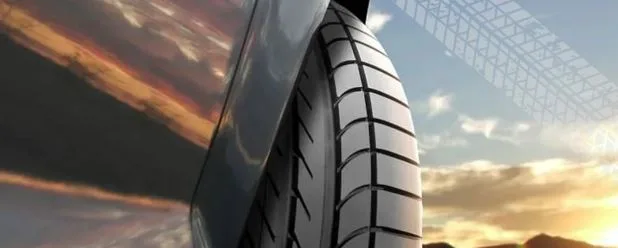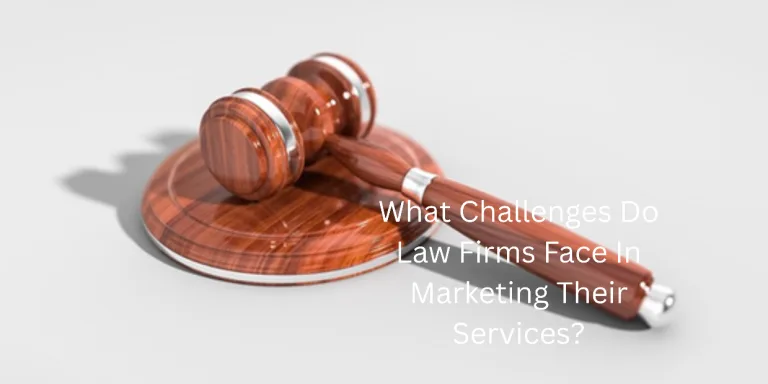Optimize Images Online Without Losing Quality and Convert Your WebP Images to JPG for Better Browser Compatibility
Images are the heartbeat of modern websites. They grab attention, tell stories, showcase products, and bring your content to life. But when handled incorrectly, they can also slow down your site, increase bounce rates, and hurt your SEO. That’s why learning how to optimize images online without losing quality is essential for every web designer, blogger, and business owner.
Another equally important step is understanding when and how to convert your WebP images to JPG for better browser compatibility. While modern formats like WebP are incredibly efficient, not all browsers and platforms handle them smoothly.
In this comprehensive guide, we’ll explore both sides — how to perfectly optimize your images while maintaining sharpness and clarity, and how to ensure every visitor sees your visuals properly by using the most compatible formats.
Why Image Optimization Matters So Much
If you’ve ever clicked on a page and waited several seconds for it to load, you already understand the impact of unoptimized images. A slow-loading website frustrates users, damages credibility, and leads to lost conversions.
Image optimization isn’t just about smaller files; it’s about improving performance, SEO, and user experience all at once. Fast websites rank higher on search engines, retain visitors longer, and deliver a smoother browsing experience across devices.
Think of image optimization as tuning a car engine — it still performs the same function, but far more efficiently. By keeping your visuals light without losing clarity, you’re effectively ensuring your website runs faster and smoother on every screen.
What Does “Without Losing Quality” Really Mean?
When we say “optimize without losing quality,” we’re talking about compressing images so they look visually identical to the original while taking up less storage and bandwidth.
There are two types of compression:
- Lossless compression – Reduces file size without removing any image data. Perfect for logos, icons, and simple graphics.
- Lossy compression – Slightly removes image details that are nearly impossible to notice to the human eye. Best for photos and complex visuals.
With the right tools and techniques, you can achieve smaller file sizes with zero visible degradation. The goal is not to create pixelated, blurry images — it’s to make your images web-friendly without compromising the experience.
Benefits of Optimizing Images Online
- Faster Website Speed: Smaller image sizes load faster, improving site performance on desktop and mobile.
- Improved SEO: Search engines reward pages that load quickly and efficiently.
- Better User Experience: Visitors are more likely to stay and engage with your site.
- Reduced Bandwidth and Storage Costs: Lighter files mean less data transferred and stored.
- Higher Conversion Rates: A smoother experience often translates into more sales or leads.
- Professional Aesthetics: Optimized images maintain sharpness and clarity even when compressed.
Step-by-Step Guide to Optimizing Images Without Losing Quality
Step 1: Choose the Right Format
The first step is understanding file formats. Each serves a specific purpose:
- JPEG/JPG: Ideal for photographs and images with complex colours.
- PNG: Perfect for graphics, icons, and images that require transparency.
- SVG: Great for logos and illustrations since it scales without losing quality.
- WebP: A newer format that offers superior compression and high visual quality.
Choosing the right format saves space from the start. For most website photos, JPEG is still the most balanced choice.
Step 2: Resize Before Uploading
Uploading massive, high-resolution photos that will only display as small thumbnails is one of the most common mistakes. Always resize your images to match how they’ll appear on your site.
For example, if your website displays an image at 1200 pixels wide, don’t upload a 4000-pixel version. This simple adjustment alone can reduce file size dramatically.
Step 3: Use Online Image Optimization Tools
There are numerous online tools that let you compress and optimize images directly in your browser. The best ones allow both lossless and lossy compression options.
Simply upload your image, let the tool process it, and download the optimized version. These services remove unnecessary metadata and fine-tune compression while maintaining perfect visual quality.
The beauty of using online tools is that you don’t need technical skills or software — just a few clicks can make your images significantly lighter without any visible difference.
Step 4: Adjust Quality Levels Intelligently
If you’re manually compressing images, aim for a balance between size and appearance. Lowering image quality from 100% to around 80% often cuts the file size by more than half with no noticeable visual difference.
Most optimization tools have sliders or quality settings — experiment until you find a sweet spot where the image looks sharp but the size is efficient.
Step 5: Strip Unnecessary Metadata
Many images include metadata like camera model, GPS location, or editing history. While useful for photography, this data is unnecessary for web display and increases file size.
Most optimizers remove this automatically, helping you achieve smaller, cleaner image files.
Step 6: Use Responsive Image Techniques
Different devices have different screen sizes and resolutions. Responsive images automatically adjust to deliver the right size to each device.
This ensures a mobile user doesn’t download a massive desktop image unnecessarily. By implementing responsive images in your website’s code, you can save bandwidth and speed up load times for all visitors.
Step 7: Enable Lazy Loading
Lazy loading is a smart technique that loads images only when they’re about to appear on the user’s screen. This improves initial page speed and reduces wasted bandwidth for images that might never be seen.
Modern browsers and content management systems make lazy loading easy to implement, often requiring just a simple attribute or plugin.
Step 8: Leverage Caching and Content Delivery Networks (CDNs)
A CDN stores copies of your images on multiple servers around the world, ensuring that users download files from the nearest location. Combined with caching, this can dramatically improve load times and reduce server load.
Optimized images served through a CDN are one of the most effective ways to ensure fast, reliable delivery across global audiences.
Understanding the WebP Format
WebP is a modern image format developed for the web. It delivers high-quality visuals at smaller sizes than JPG or PNG by using advanced compression techniques.
Benefits of WebP include:
- Smaller file sizes for the same visual quality.
- Support for both lossy and lossless compression.
- Ability to handle transparency like PNGs.
Because of its efficiency, WebP has become the preferred format for many developers and platforms. However, not every browser or device fully supports it, which is where compatibility concerns come in.
Why Convert WebP to JPG for Better Browser Compatibility
While WebP is fantastic, some older browsers, email clients, and applications don’t display WebP images correctly. If a browser can’t render a WebP file, the user will simply see a broken image icon — not ideal for your brand.
Converting WebP to JPG ensures that every visitor, regardless of their browser or device, sees your images properly. JPG remains the most universally supported image format on the internet, compatible with nearly every platform, app, and browser.
When Should You Convert WebP to JPG?
You don’t need to convert all your WebP images, but certain scenarios call for it:
- You’re targeting older browsers or devices – Some legacy systems don’t support WebP yet.
- You’re sending images via email – Many email clients only support JPG and PNG formats.
- You’re uploading to social media platforms – Some still prefer traditional formats for uploads.
- You’re offering downloadable assets – JPG files are more familiar and easily handled by end users.
Converting selectively ensures both optimization and accessibility without sacrificing performance.
How to Convert WebP to JPG Online
Converting WebP to JPG is a simple process. Here’s how to do it using online tools:
- Find a reliable online image converter.
- Upload your WebP image.
- Select JPG as the output format.
- Click “Convert” and download your new file.
In just seconds, you’ll have a browser-friendly JPG version of your image, ready for upload. Many of these tools even allow batch conversion if you’re working with multiple files.
How to Maintain Quality During Conversion
When converting between formats, it’s crucial to maintain quality. Here are a few tips:
- Start from a high-quality source: Never re-convert compressed images multiple times. Each conversion can slightly degrade quality.
- Use minimal compression: When saving JPGs, set quality between 80–90% for best results.
- Check resolution: Ensure your JPG output maintains the same pixel dimensions as your WebP original.
- Preview before saving: Always compare before and after to ensure there’s no visible difference.
With careful handling, your converted JPGs will look identical to your WebP originals while ensuring wider compatibility.
Common Mistakes to Avoid
- Uploading uncompressed originals: Always optimize before uploading.
- Ignoring mobile users: Use responsive images to adapt to smaller screens.
- Using the wrong format: Choose based on image content and purpose.
- Over-compressing: Too much compression results in blurry or blocky images.
- Skipping alt text: Every image should have descriptive alt text for accessibility and SEO.
- Not testing conversions: Always verify that converted images look perfect and load correctly.
Tips for the Perfect Balance of Quality and Performance
- Batch optimize images instead of handling them one by one.
- Automate optimization using website plugins or CDN features.
- Regularly audit your media library to remove oversized or unused images.
- Monitor loading times after adding new visuals to ensure performance remains strong.
- Stay consistent with naming conventions and compression settings for brand uniformity.
Final Thoughts
Optimizing images online without losing quality isn’t just a technical task — it’s a vital part of delivering a fast, professional, and accessible website. Properly optimized images enhance performance, user satisfaction, and SEO all at once.
Meanwhile, understanding when to Convert your WebP images to JPG for better browser compatibility keeps your visuals accessible to every visitor, regardless of what browser or device they use.
The smartest strategy is to blend both techniques: use WebP for speed and efficiency where supported, and provide JPG backups to guarantee universal compatibility. With the right balance, your website will load faster, look sharper, and perform better — all without compromising visual excellence.
Your visitors won’t see the work behind the scenes, but they’ll certainly feel the difference — in every smooth, lightning-fast, perfectly rendered page you deliver.




